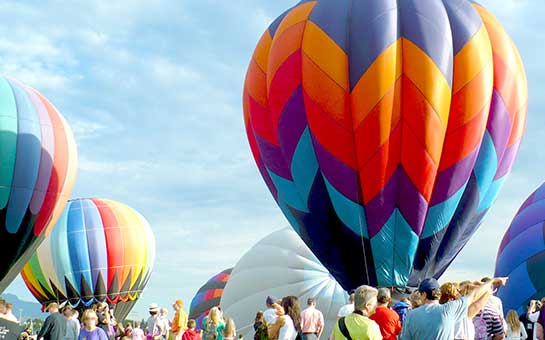Hot air ballooning is probably the calmest, most serene hazardous sport there is. Floating peacefully through the air and traversing beautiful landscapes is an amazing feeling. Yet, hot air ballooning still qualifies as an extreme sport, and fatalities do occur. So, if you’re planning to take a hot air balloon ride while on vacation, having travel insurance for hot air ballooning is a necessity.
Travel Insurance for Hot Air Ballooning
Getting a travel insurance plan for hot air ballooning is crucial before climbing aboard. If an accident were to occur, the insurance plan would ensure that a single mishap doesn’t destroy your bank account. After all, medical care in a foreign country is often very expensive. Insurance will provide welcome relief that allows you to focus on making a full recovery.
Many regular travel insurance plans do not cover the risks associated with hazardous sports like hot air ballooning. Ensure the plan you choose has coverage that includes hot air balloon insurance. Getting a hot air ballooning travel insurance plan will give you the peace of mind to enjoy a peaceful voyage.
The Basics of Hot Air Ballooning
Hot air balloons work on the principle of hot air being lighter than cool air. When the air inside the balloon heats up, it becomes lighter than the surrounding air outside of it, lifting the balloon and the basket attached beneath it. Passengers in the basket enjoy a bird’s-eye view of their surroundings.
The first hot air balloon flight with people on board took place on October 19th, 1783, in Paris, France. Since then, hot air ballooning has become a popular recreational pastime. Hot air balloon festivals are major events in many countries. The annual Albuquerque International Balloon Fiesta in Albuquerque, New Mexico, features more than 500 balloons operated by experienced pilots.
Hot air balloons are difficult to steer and maneuver. The balloons depend on wind to travel, and wind speed depends on altitude. Thus, pilots must carefully regulate their altitude to stay in control. This is even more important when many balloons are in the air at the same time. At such times, collisions between balloons are a possibility. Similarly, on descent, the balloons must be set down in a safe clearing. The landing isn’t always smooth, and the basket can tip over on occasion. These hot air balloon rides are enjoyable, but they do come with an element of risk.
Risks of Hot Air Ballooning
The most dangerous part of a balloon ride is the descent, and that is when the most caution is required. Since the pilot cannot maneuver the balloon well, there are chances it can strike a powerline and catch fire. Pilots receive training to avoid such dangerous situations. Yet, the risk of such accidents happening still remains. Remember to stay vigilant and help the pilot look for potential obstacles.
A fire on board the balloon is also a catastrophic risk. If the fire extinguisher can’t put it out, the only way to escape is by jumping out of the balloon. The height of recreational flights can range between treetop level up to a few thousand feet; in the latter case, jumping would prove just as fatal as staying aboard.
Accidents in hot air ballooning have resulted mostly in injuries, although a few fatalities have been recorded. Keeping these risks in mind, it is important that you get hot air ballooning travel insurance. This kind of insurance would help cover the costs of medical treatment should any unfortunate accidents or injuries occur.

